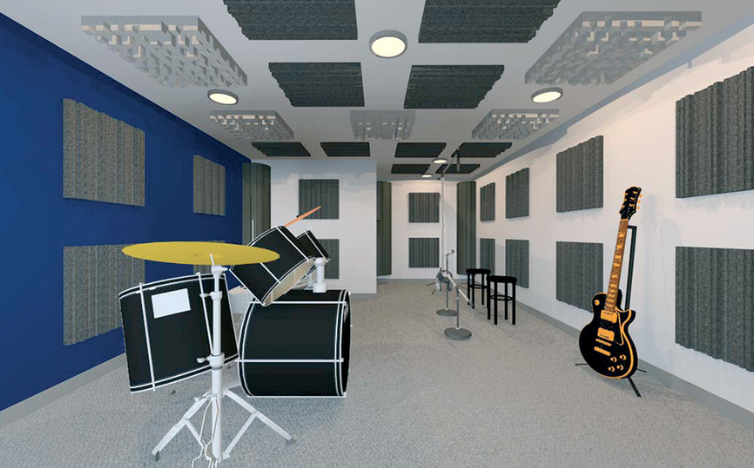Creating an acoustically optimized rehearsal space or practice room is essential for musicians, bands, and audio engineers. Proper acoustic treatment can significantly enhance sound quality, reduce unwanted noise, and create a more productive environment. Here’s how to get started.
Why Acoustic Treatment Matters
Acoustic treatment is crucial for controlling sound reflections, reducing echo, and minimizing external noise interference. Without it, your rehearsal space can sound muddy, making it difficult to hear individual instruments or vocals clearly. Proper treatment ensures a balanced sound, allowing you to focus on your performance or recording.

Assess Your Space
Before making any changes, evaluate your room’s size, shape, and existing acoustics. Identify problem areas such as corners (where bass tends to build up) or flat walls (which cause sound reflections). Use a clap test to detect echoes and determine where sound absorption is needed most.
Choose the Right Acoustic Materials
- Acoustic Panels: These are ideal for absorbing mid to high-frequency sounds and reducing echoes. Place them on walls and ceilings at reflection points.
- Bass Traps: Install these in corners to control low-frequency buildup and improve overall sound clarity.
- Diffusers: Use these to scatter sound waves evenly, creating a more natural acoustic environment.
- Rugs and Curtains: Soft materials like rugs and heavy curtains can help absorb sound and reduce reverberation.
Strategic Placement of Acoustic Treatment
- Walls: Place acoustic panels at the first reflection points, typically halfway between your ears and the speakers.
- Ceiling: Hang panels or clouds above the rehearsal area to reduce ceiling reflections.
- Corners: Install bass traps in all corners to manage low-frequency issues.
- Floor: Use rugs or carpet to minimize floor reflections, especially in smaller rooms.
DIY vs. Professional Solutions
While DIY acoustic treatments can be cost-effective, professional solutions often provide better results. If you’re on a budget, start with DIY panels and bass traps, but consider investing in professional-grade materials for long-term benefits.
Test and Adjust
After installing acoustic treatments, test the room’s sound quality. Play music or perform in the space and listen for improvements. Make adjustments as needed, such as adding more panels or repositioning existing ones.
Maintain Your Space
Regularly check your acoustic treatments for wear and tear. Dust and clean panels to ensure they remain effective. Over time, you may need to upgrade or replace materials to maintain optimal sound quality.
Call us: Contact DeSound Soundproofing Expert in Dubai For Soundproofing: +971 56 231 4204
By following these steps, you can transform your rehearsal space or practice room into an acoustically balanced environment. Whether you’re practicing, recording, or performing, proper acoustic treatment will elevate your sound and enhance your overall experience.

